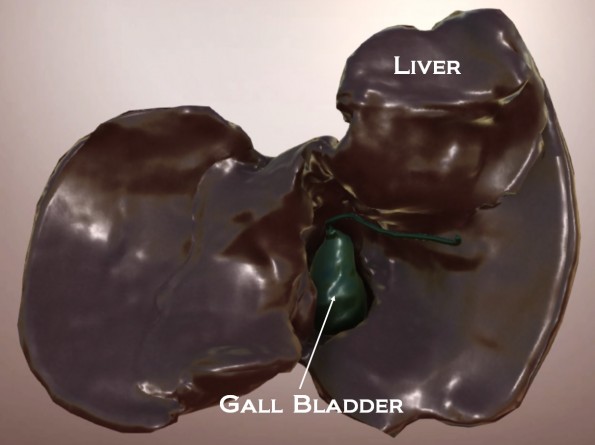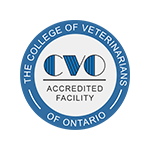
This week’s case features a sweet, brave Havanese dog with a rare and life-threatening disease of the gall bladder.
Our patient had initially vomited a few times and lost her appetite. She felt a little better with anti-nausea medication but her appetite didn’t return. She was rechecked and found to be dehydrated and jaundiced. I admitted her into the hospital as it was clear more intensive care was needed.
She had no obvious problems on her x-rays, but her bloodwork indicated serious issues with her liver and biliary system, including the gall bladder.
The gall bladder is a sac attached to the liver. It stores bile, which is a green fluid that circulates through the liver. Bile is involved in fat digestion and excretion of toxins from the body. After eating, the gall bladder contracts, squeezing bile into the small intestine to allow breakdown and absorption of fats from the diet. The bile is then re-absorbed and recycled.
Bile is irritating to living tissues. It is therefore important that the bile fluid constantly cycles through the liver as opposed to sitting in place. However, some conditions cause the bile cycling to slow down or stop, a condition referred to as “cholestasis”.
One cause of cholestasis is a gall bladder condition referred to as a mucocele. For reasons that are not entirely clear, dogs that have a mucocele have excessive mucus in the bile within the gall bladder. This causes the fluid to become too thick to be able to cycle through the small ducts in the liver. A mucocele can grow large enough to completely obstruct flow of bile.
As I was concerned this condition could be present in this patient, I ordered an ultrasound to be performed. A specialist travelled to Bucksburn right away to conduct this important imaging.
The ultrasound showed changes that were very troubling. There was a mucocele present, but we were shocked to see it was located outside of the gall bladder. There was free fluid present in the abdomen, which was collected by needle and confirmed to be bile fluid.
Similar to a water balloon, the gall bladder can rupture after repeated contractions against trapped fluid. Based on the ultrasound results, we concluded this had occurred in our poor patient.
As stated previously, bile is irritating to the tissues. It can also be contaminated with bacteria. If this fluid is released in the abdomen, it immediately causes damage and infection within the tissues in the abdomen. Therefore, a ruptured gall bladder requires emergency surgery!
While most conditions can be treated in house at Bucksburn, certain advanced and rare conditions require surgical specialists to manage. This patient’s condition was outside of our scope, but we were happy to ask the experts at the Ontario Veterinary College in Guelph to take over her care.
Our patient was rushed to Guelph where emergency surgery was performed. The gall bladder was removed and the contaminated fluid in the abdomen was thoroughly flushed out.
I am pleased to say the surgery was a success and after several days of recovery in the ICU, this sweet little pooch is now home with her family again!
I would like to extend my thanks to this family for their incredible dedication to their pet!



